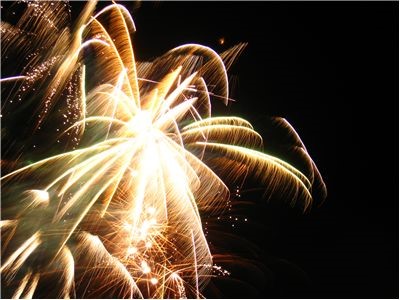Info
Current Location: Home > Info>History of Fireworks
History of Fireworks and Gunpowder
Posted on 2018-02-01

Fireworks are devices of explosive pyrotechnic nature. They are made of gunpowder and other chemicals that, when ignited, emit a combination of colored flames, noise, smoke or floating materials, and are used for entertainment or celebration. They can work on the ground or be used as aerial firework. Fireworks are common throughout the world but where do they come from? Who was the first to use fireworks?
Firework History
Trying to find elixir of life, Chinese found gunpowder and from it, they made fireworks which they at first used in rituals of forcing out evil spirits and later for celebrations. Read more about firework history.
Firework Facts
As many things, fireworks too inspired people to break records and achieve more. Some built large firework rockets, some made fireworks out of thousands of rockets and some made laws on how the fireworks should be used so no one could get hurt.
Firework Making
Making of fireworks is not a risk-free job. In every step of the work, something can happen - from the design and initial experiments with many different types of fireworks, to the transport of finished product.
Brief History
Fireworks were invented in China in 10th century. They were invented after gunpowderwhich is their main ingredient and are preliminary successors of bamboos, whose air pockets would explode when heated, which were thrown in fire to ward off evil spirits. In no time, they were used in celebrations. In time, skill of firework making became craft for itself and pyrotechnicians were respected for their knowledge of complex techniques in preparing firework shows. Common people could freely buy fireworks during the Song Dynasty (960–1279) and since that time there are documents that tell about large displays of fireworks. Fireworks were used at the courts of Emperor Huizong of Song (1100–1125) and Empress Dowager Gong Sheng in 1264. Some of the most famous Chinese festivals where fireworks are used are Spring Festival (Chinese New Year) and the Mid-Autumn Festival.
From China, gunpowder came to Arabia in 13th century and is used for rockets, fireworks and other incendiaries. Arabs also knew about fireworks and called it Chinese flowers. Fireworks became popular in Europe in 17th century with other eastern arts. Pierre Nicolas le Chéron d'Incarville was a Jesuit missionary who lived in Beijing in 1758. He wrote to the Paris Academy of Science on how to make many types of Chinese fireworks. These texts became basis for development of European fireworks. Fireworks became a way to celebrate military victories, public celebrations and religious ceremonies. Firemasters was a title of the first European fireworks experts. Their assistants wore caps of leaves to protect their heads from sparks and were because of that called “green men”. They also fulfilled the roles of jesters, entertaining the crowd until the show is ready. With Renaissance, craft of firework making spreads and new types of fireworks are invented. Pyrotechnic schools are founded and they began training fireworks artists across Europe. In the 1830s, Italians start to add trace amounts of metals and other additives to gunpowder which gives, as a result, colors that were not available before. Their experimentation was basis for today’s colorful firework shows.
The first fireworks came to Americas in 17th century. The first 4th of July, Independence Day of the United States, was in 1777 and it was done with fireworks. In time, technology advanced and fireworks became bigger and sadly more dangerous. Misuse of fireworks killed more than 4,000 people from 1900 to 1930. Because of that, new laws were made that restricted use of stronger fireworks for amateur users and they were reserved for professionals with licenses. That in time lowered the casualties whose number still drops.
Here are some of the most interesting facts about fireworks:
China produces greatest share of the worlds need for fireworks.
Fireworks with the greatest diameter are produced in Spain.
Three sparklers if ignited together a left to burn together can generate the same heat as a blow-torch.
People that make fireworks wear cotton clothing because synthetic clothing can produce sparks.
Britain has a law which makes it illegal to sell fireworks to anyone who is younger than 18 years of age. Violator can suffer the maximum penalty is £5,000 and/or six months in prison.
The largest firework rocket had 13kg in weight and was made and launched in Portugal.
Different colors of fireworks are achieved with adding of color-producing compounds : for red are used strontium or lithium; for orange - calcium, yellow - sodium; green - barium; blue - copper; indigo - cesium; violet - potassium; gold - charcoal, iron or lampblack; and fro white - titanium, aluminum, beryllium or magnesium.